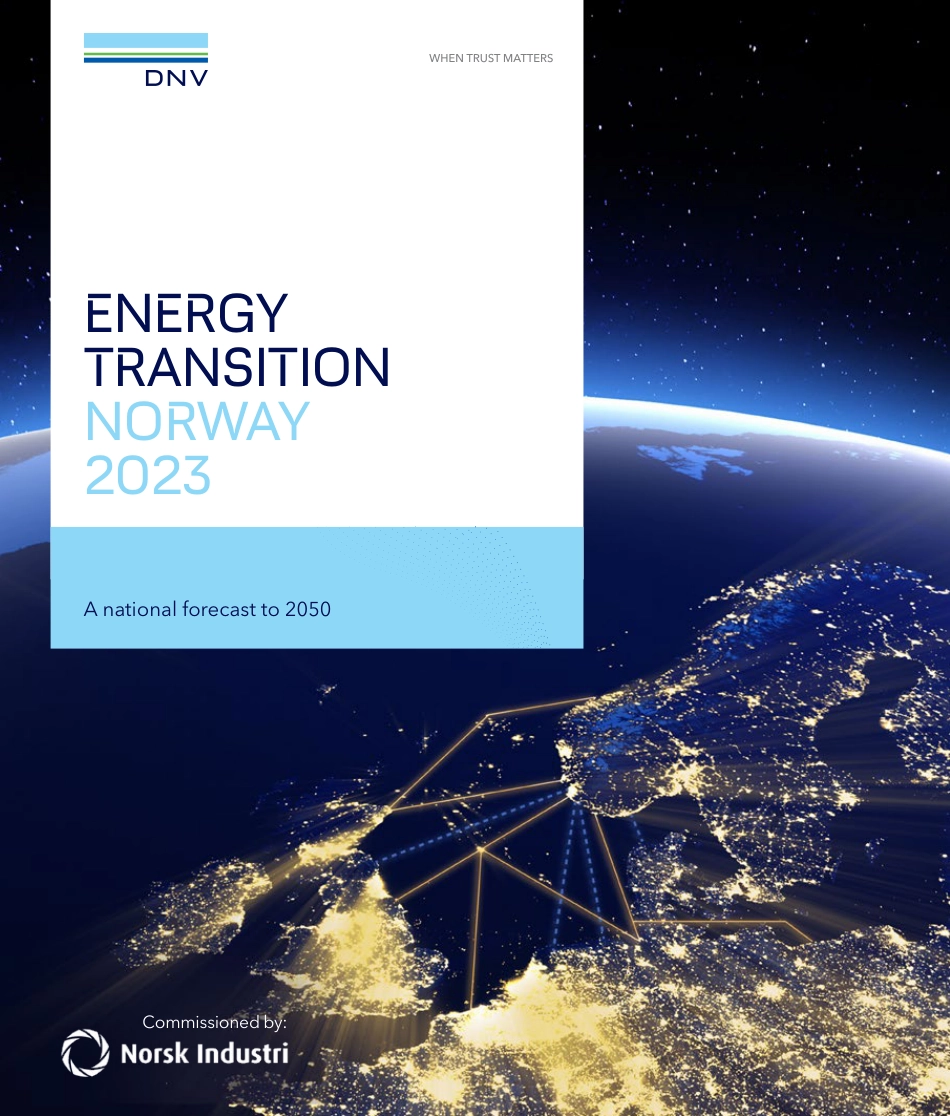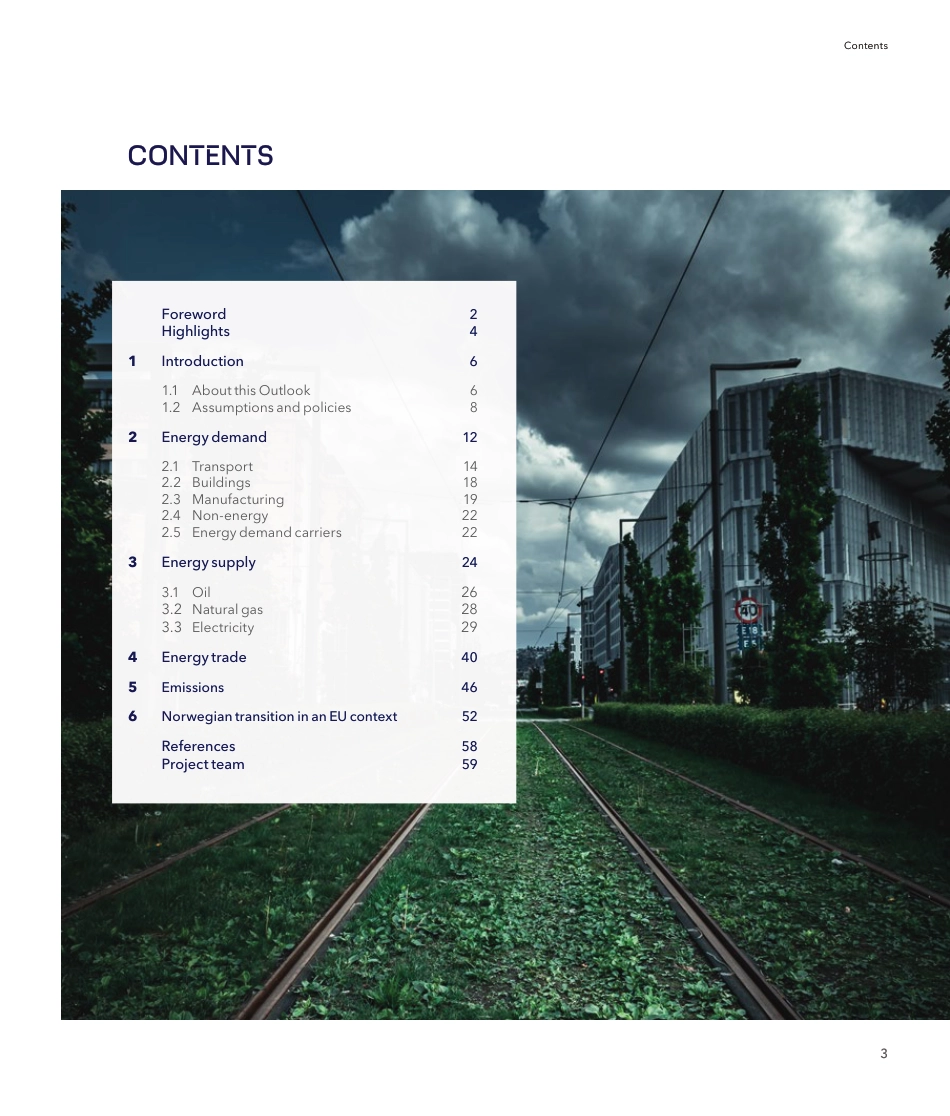ENERGY TRANSITIONNORWAY 2023A national forecast to 2050Commissioned by:2DNV Energy Transition Norway 20232The 2023 edition of the Energy Transition Norway 2050 reconfirms that Norway is not on track to meet Paris Agreement targets for reducing greenhouse gas emissions. Despite cross-political support for 55% and 100% GHG reductions by 2030 and 2050, respectively, Norway is heading for 27% less in 2030 and 80% in 2050. When Norway ratified the Paris Agreement in 2016, nearly all its electricity was from hydropower. We also got 140 TWh of energy from fossil fuels. To replace that fossil consumption to reach climate targets, roughly 100 TWh of additional renewables capacity for electricity and making hydrogen and ammonia was needed. The electricity grid needs strengthening across Norway, and carbon capture and storage is part of the equation. We are far from achieving this and thus face an expected net electricity deficit in 2028 lasting until 2032, that could see Norway paying European price levels or more for electricity.This report shows the need for 390 TWh renewable power in 2050, nearly three times more than today, through converting existing fossil generation, building new green industries, and enabling hydrogen production for domestic use and export. Additional solar and hydro-power are important, especially in the short term, but make limited contributions. Onshore wind is affordable and may contribute 40–50 TWh. Offshore wind, especially floating offshore wind, will be the main contributor with more than 100 TWh near 2050. All renewables are weather-dependent, and we should expect intense supply and demand dynamics at national, regional, and local levels. Balancing the grid requires hydropower plan...



